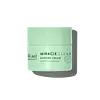What's inside
What's inside
 Key Ingredients
Key Ingredients

 Benefits
Benefits

 Concerns
Concerns

No concerns
 Ingredients Side-by-side
Ingredients Side-by-side

Water
Skin ConditioningDimethicone
EmollientGlycerin
HumectantPropanediol
SolventPolysilicone-11
Cetearyl Olivate
Butylene Glycol
Humectant1,2-Hexanediol
Skin ConditioningSodium Acrylate/Sodium Acryloyldimethyl Taurate Copolymer
Emulsion StabilisingSorbitan Olivate
EmulsifyingPolyisobutene
Carbomer
Emulsion StabilisingAminomethyl Propanol
BufferingCitric Acid
BufferingCaprylhydroxamic Acid
Disodium EDTA
Sodium Hyaluronate
HumectantDimethiconol
EmollientCaprylyl/Capryl Glucoside
CleansingDecyl Glucoside
CleansingWater, Dimethicone, Glycerin, Propanediol, Polysilicone-11, Cetearyl Olivate, Butylene Glycol, 1,2-Hexanediol, Sodium Acrylate/Sodium Acryloyldimethyl Taurate Copolymer, Sorbitan Olivate, Polyisobutene, Carbomer, Aminomethyl Propanol, Citric Acid, Caprylhydroxamic Acid, Disodium EDTA, Sodium Hyaluronate, Dimethiconol, Caprylyl/Capryl Glucoside, Decyl Glucoside
Water
Skin ConditioningGlycerin
HumectantPropanediol
SolventCaprylic/Capric Triglyceride
MaskingDicaprylyl Ether
EmollientCetearyl Alcohol
EmollientPentylene Glycol
Skin Conditioning1,2-Hexanediol
Skin ConditioningCitrus Aurantium Bergamia Fruit Oil
MaskingSalvia Sclarea Oil
MaskingDiisostearyl Malate
EmollientPentaerythrityl Tetraethylhexanoate
EmollientSuccinic Acid
BufferingPanthenol
Skin ConditioningSodium Polyacryloyldimethyl Taurate
Emulsion StabilisingHydroxyethyl Acrylate/Sodium Acryloyldimethyl Taurate Copolymer
Emulsion StabilisingSucrose Polystearate
EmollientCetearyl Olivate
Sorbitan Olivate
EmulsifyingHydrogenated Polyisobutene
EmollientPoly C10-30 Alkyl Acrylate
Emulsion StabilisingDipotassium Glycyrrhizate
HumectantEthylhexylglycerin
Skin ConditioningGlyceryl Acrylate/Acrylic Acid Copolymer
HumectantTocopherol
AntioxidantBehenyl Alcohol
EmollientXanthan Gum
EmulsifyingLimonene
PerfumingLinalool
PerfumingWater, Glycerin, Propanediol, Caprylic/Capric Triglyceride, Dicaprylyl Ether, Cetearyl Alcohol, Pentylene Glycol, 1,2-Hexanediol, Citrus Aurantium Bergamia Fruit Oil, Salvia Sclarea Oil, Diisostearyl Malate, Pentaerythrityl Tetraethylhexanoate, Succinic Acid, Panthenol, Sodium Polyacryloyldimethyl Taurate, Hydroxyethyl Acrylate/Sodium Acryloyldimethyl Taurate Copolymer, Sucrose Polystearate, Cetearyl Olivate, Sorbitan Olivate, Hydrogenated Polyisobutene, Poly C10-30 Alkyl Acrylate, Dipotassium Glycyrrhizate, Ethylhexylglycerin, Glyceryl Acrylate/Acrylic Acid Copolymer, Tocopherol, Behenyl Alcohol, Xanthan Gum, Limonene, Linalool
 Reviews
Reviews

Ingredients Explained
These ingredients are found in both products.
Ingredients higher up in an ingredient list are typically present in a larger amount.
1,2-Hexanediol is a synthetic liquid and another multi-functional powerhouse.
It is a:
- Humectant, drawing moisture into the skin
- Emollient, helping to soften skin
- Solvent, dispersing and stabilizing formulas
- Preservative booster, enhancing the antimicrobial activity of other preservatives
Cetearyl Olivate is an emulsifier and texture enhancer. It is derived from the fatty acids of olive oil and Cetearyl alcohol, and is biodegradable.
As an emulsifier, it is used to prevent oils and waters from separating. It can also
Manufacturers use the name Olivem 1000. This ingredient has been found to preserve the natural microbiome of skin. Having a healthy microbiome helps keep our skin healthy and protects against harmful bacteria. This ingredient is grouped with Sorbitan Olivate under the name Olivem 1000.
Learn more about Cetearyl OlivateGlycerin is already naturally found in your skin. It helps moisturize and protect your skin.
A study from 2016 found glycerin to be more effective as a humectant than AHAs and hyaluronic acid.
As a humectant, it helps the skin stay hydrated by pulling moisture to your skin. The low molecular weight of glycerin allows it to pull moisture into the deeper layers of your skin.
Hydrated skin improves your skin barrier; Your skin barrier helps protect against irritants and bacteria.
Glycerin has also been found to have antimicrobial and antiviral properties. Due to these properties, glycerin is often used in wound and burn treatments.
In cosmetics, glycerin is usually derived from plants such as soybean or palm. However, it can also be sourced from animals, such as tallow or animal fat.
This ingredient is organic, colorless, odorless, and non-toxic.
Glycerin is the name for this ingredient in American English. British English uses Glycerol/Glycerine.
Learn more about GlycerinPropanediol is an all-star ingredient. It softens, hydrates, and smooths the skin.
It’s often used to:
Propanediol is not likely to cause sensitivity and considered safe to use. It is derived from corn or petroleum with a clear color and no scent.
Learn more about PropanediolSorbitan Olivate is created from the fatty acids in olive oil and sorbitol.
This ingredient is an oil in water emulsifier. It helps stabilize a product by preventing oils and waters from separating. Sorbitan Olivate also helps hydrate the skin.
Manufacturers sell sorbitan olivate under the name OliveM 1000. OliveM 1000 a multifunctional ingredient. It is self-emulsifying. According to a manufacturer, OliveM 1000 does not disrupt natural skin biome.
Due to its olive oil base, this ingredient may not be fungal-acne safe.
Learn more about Sorbitan OlivateWater. It's the most common cosmetic ingredient of all. You'll usually see it at the top of ingredient lists, meaning that it makes up the largest part of the product.
So why is it so popular? Water most often acts as a solvent - this means that it helps dissolve other ingredients into the formulation.
You'll also recognize water as that liquid we all need to stay alive. If you see this, drink a glass of water. Stay hydrated!
Learn more about Water